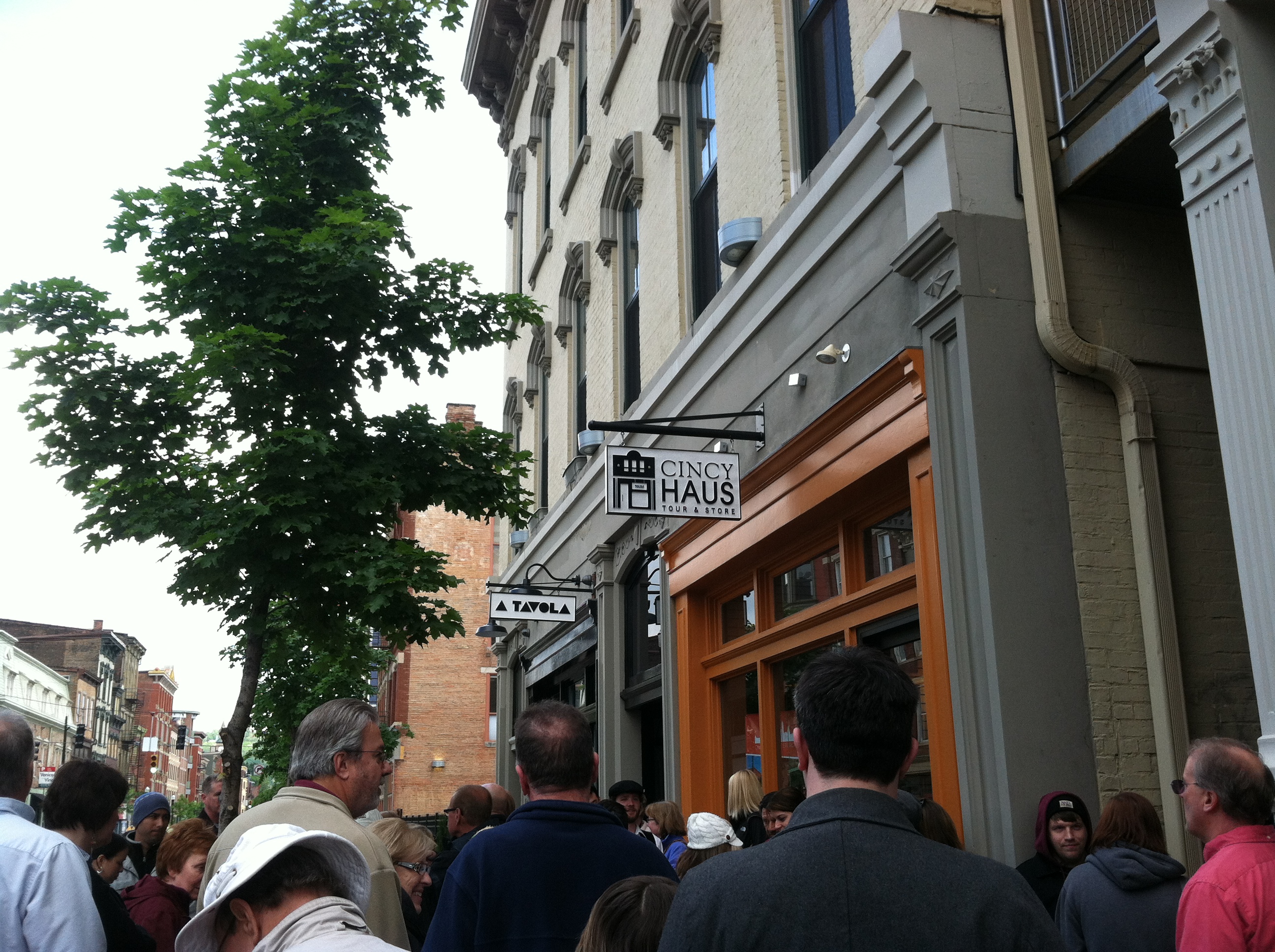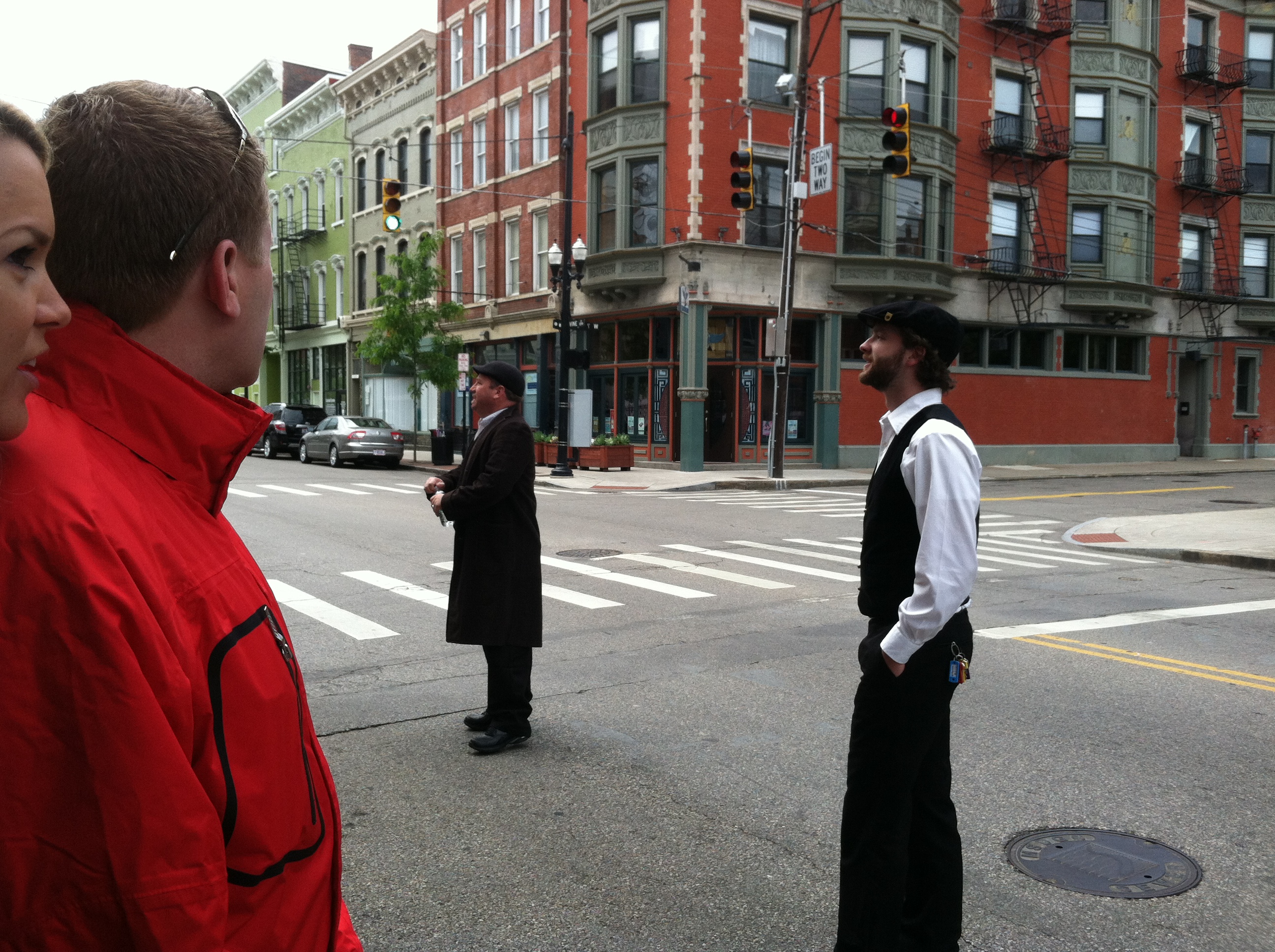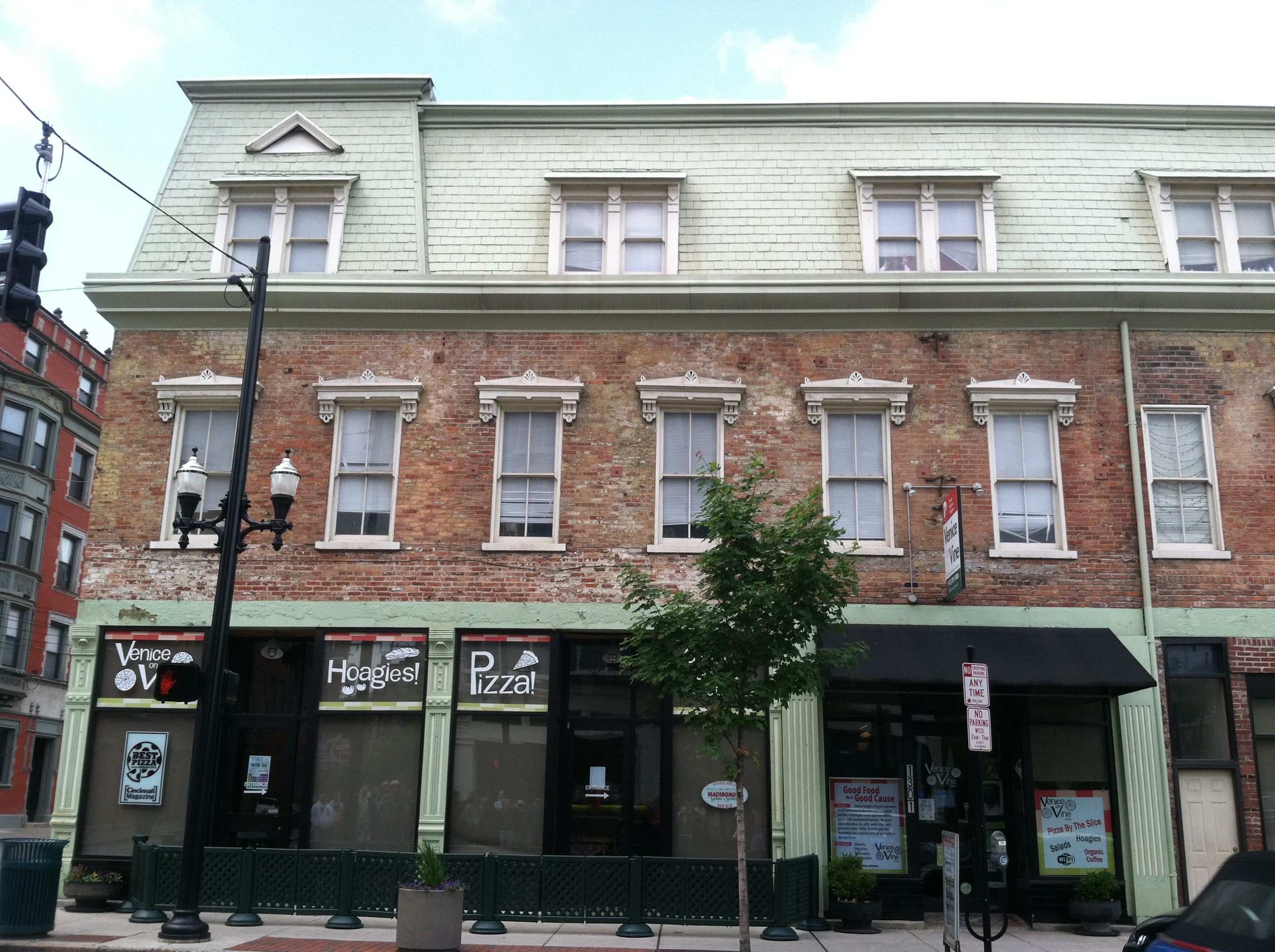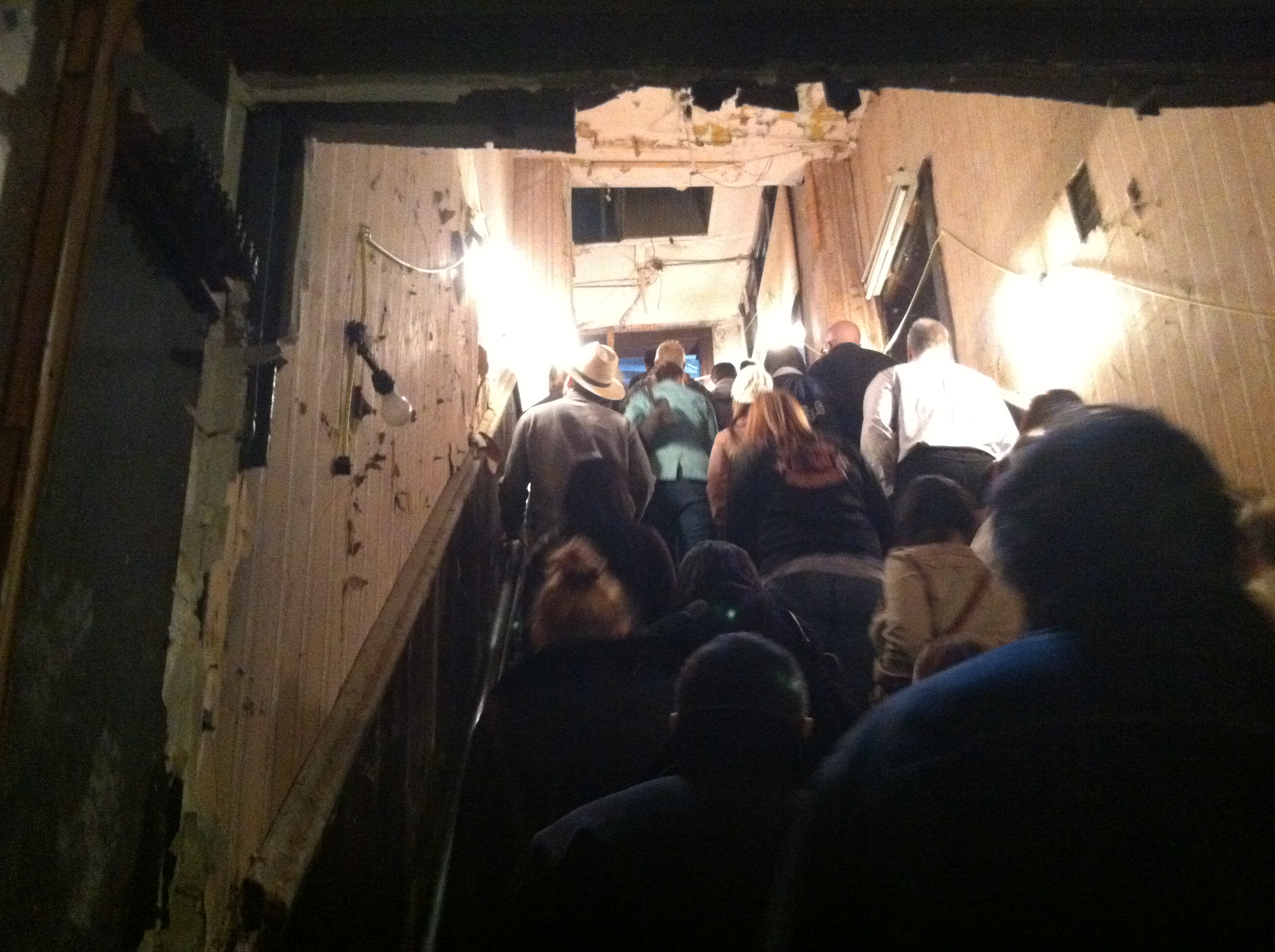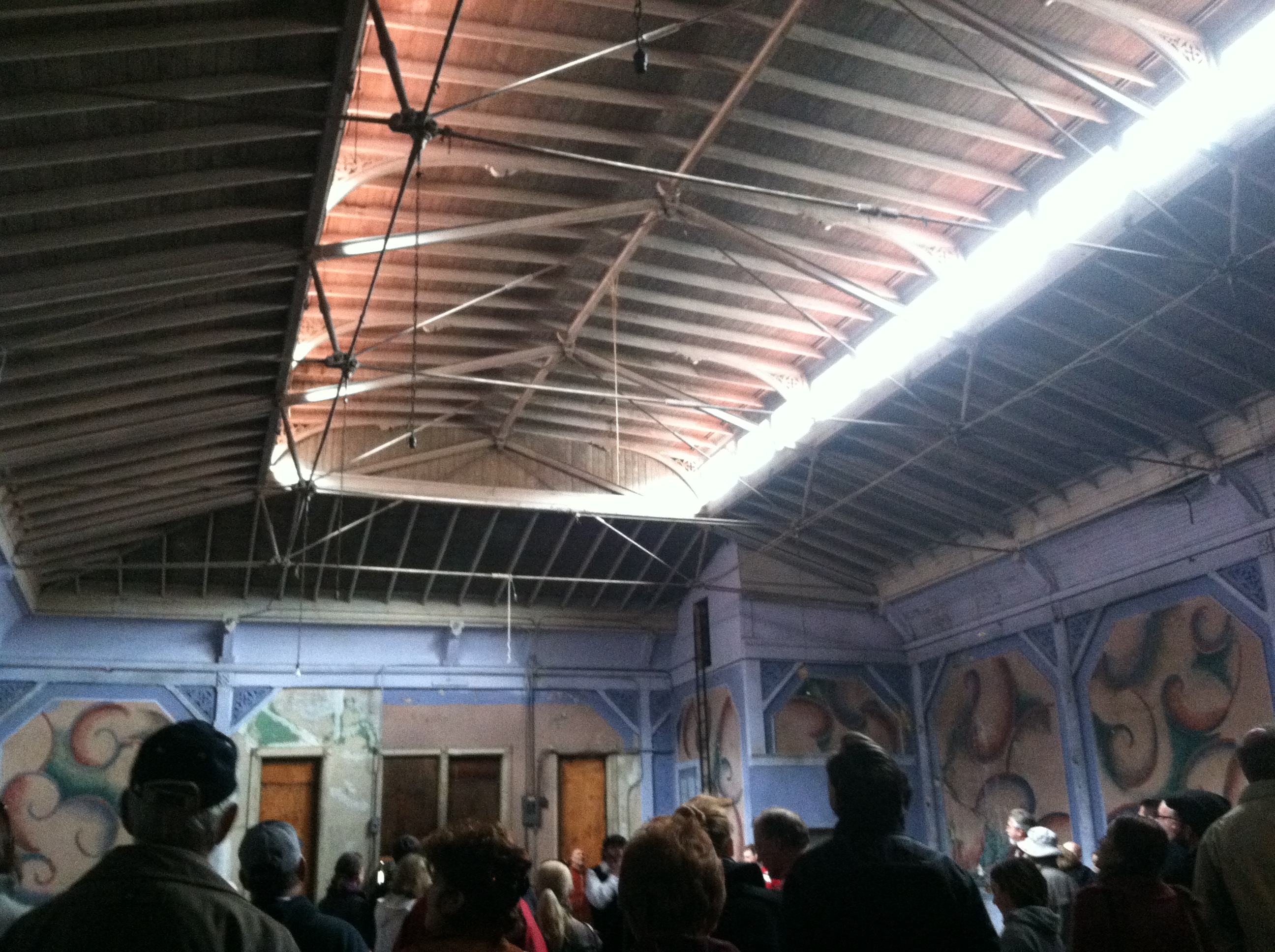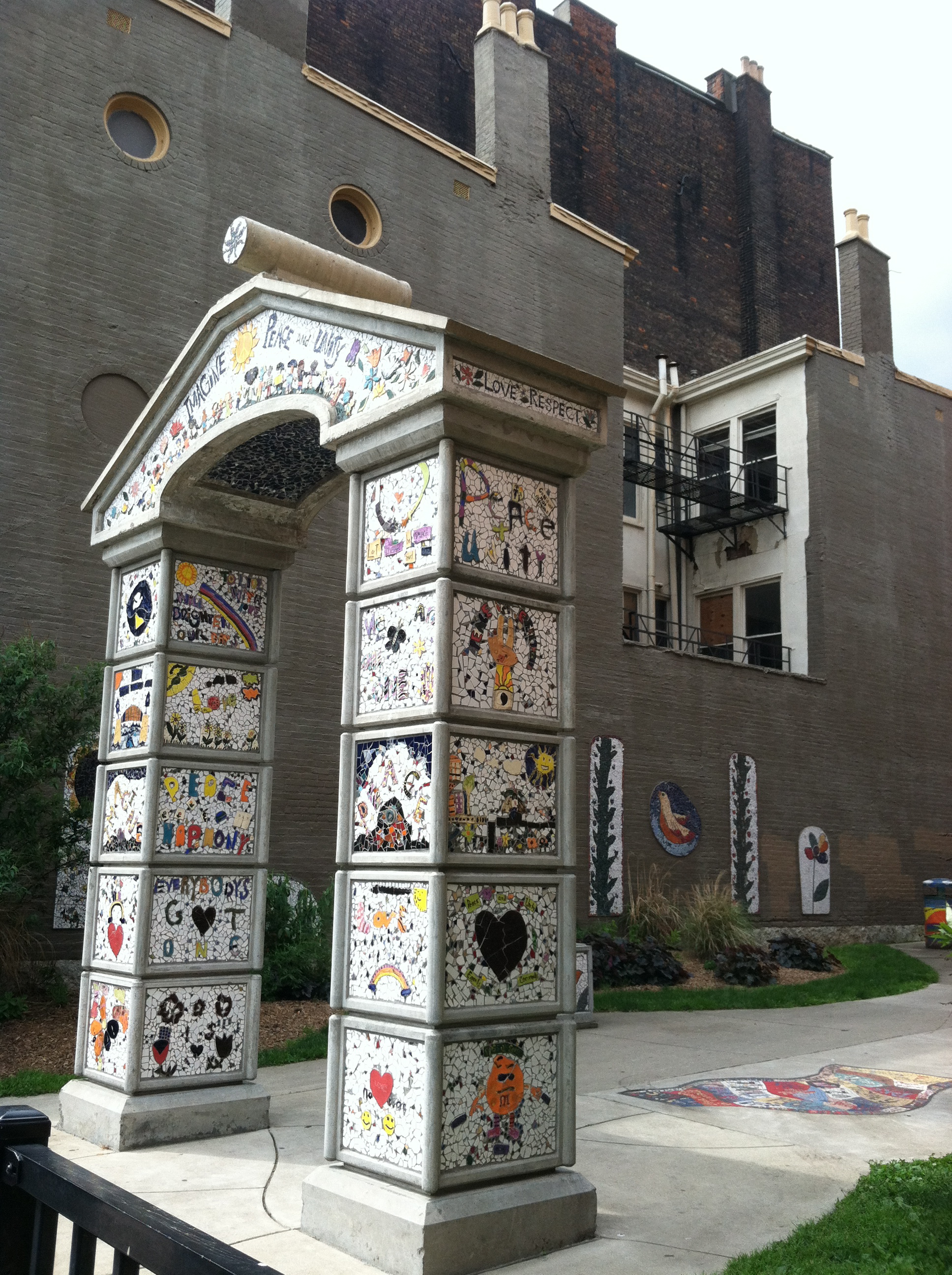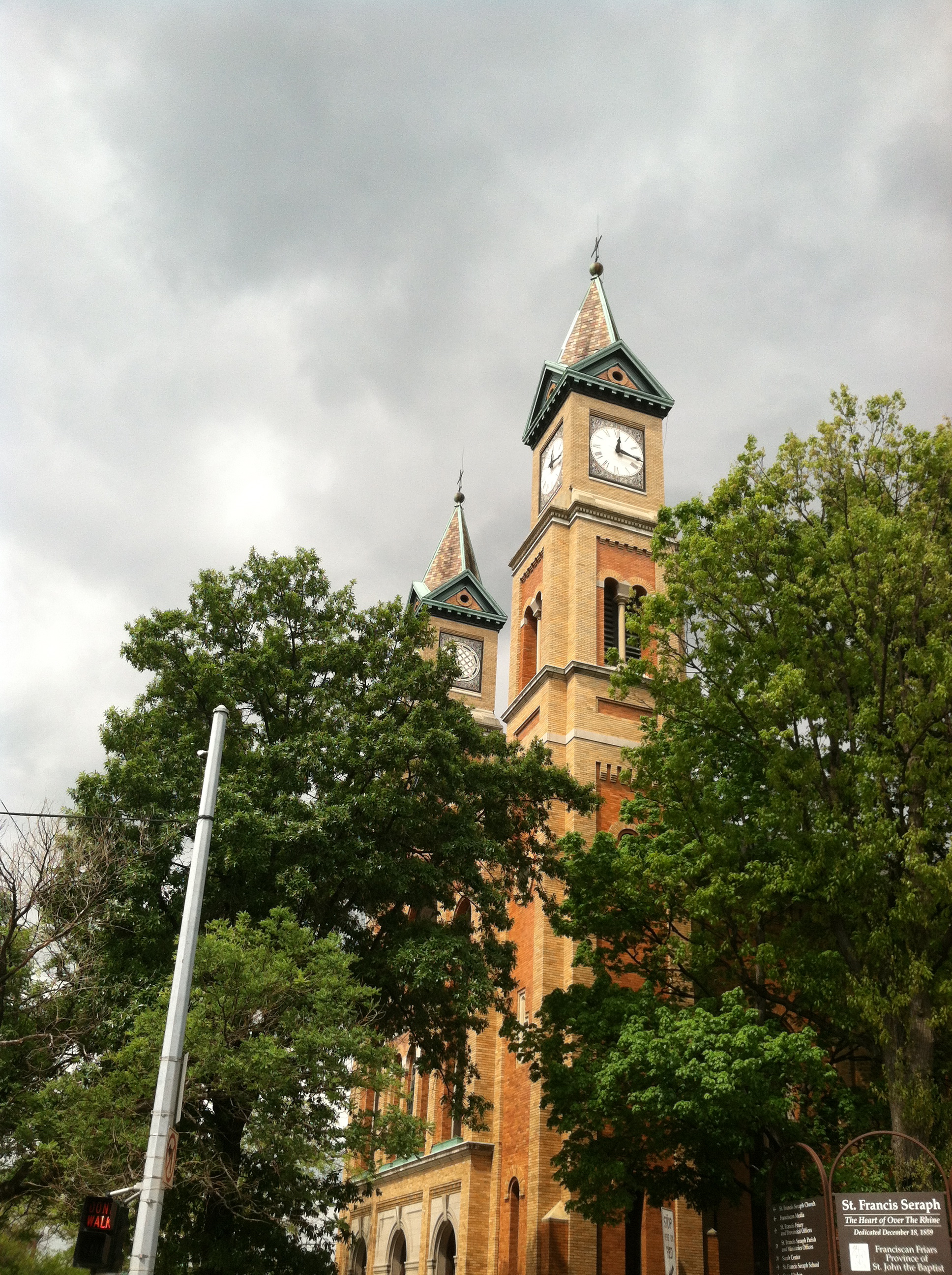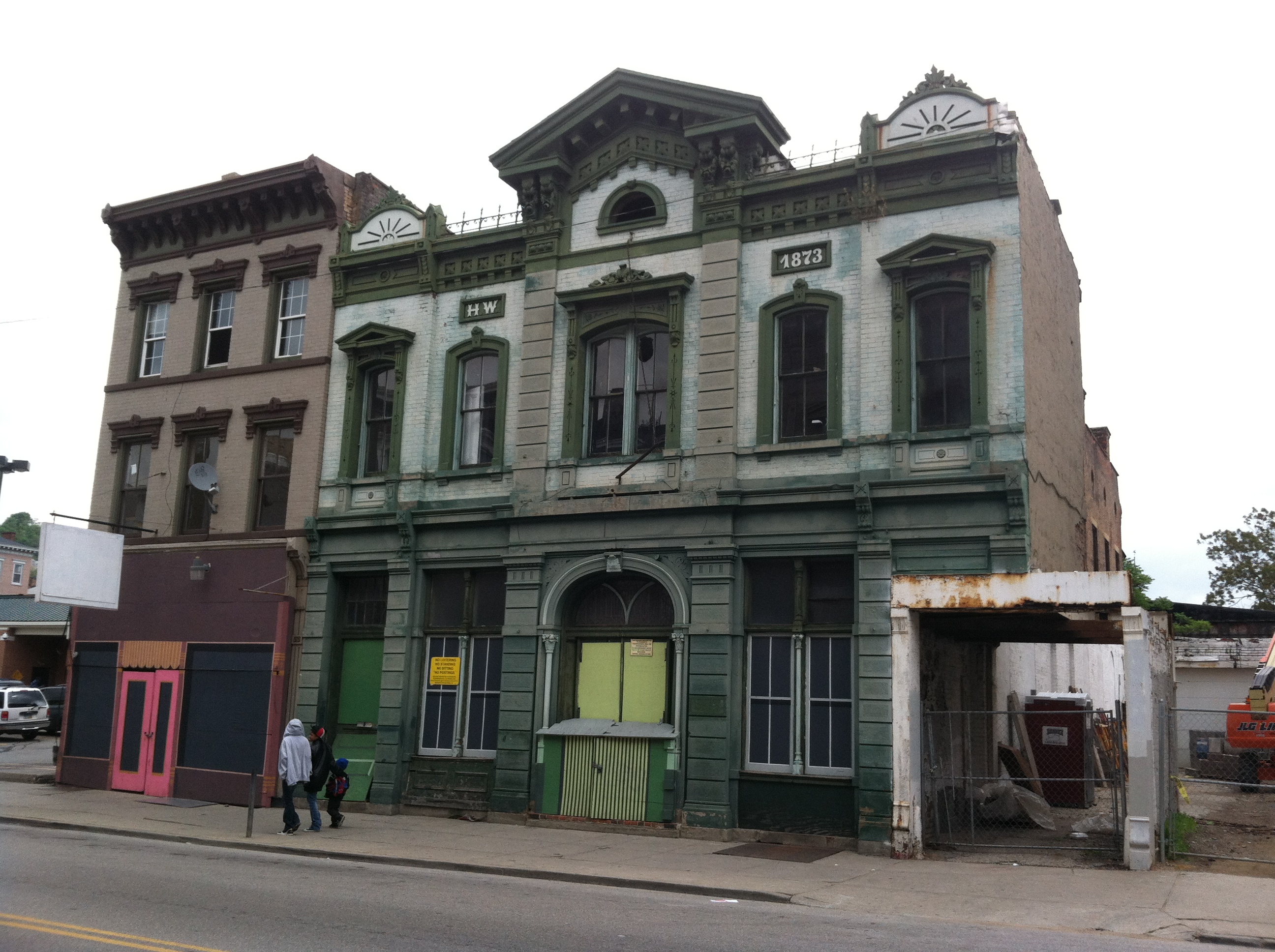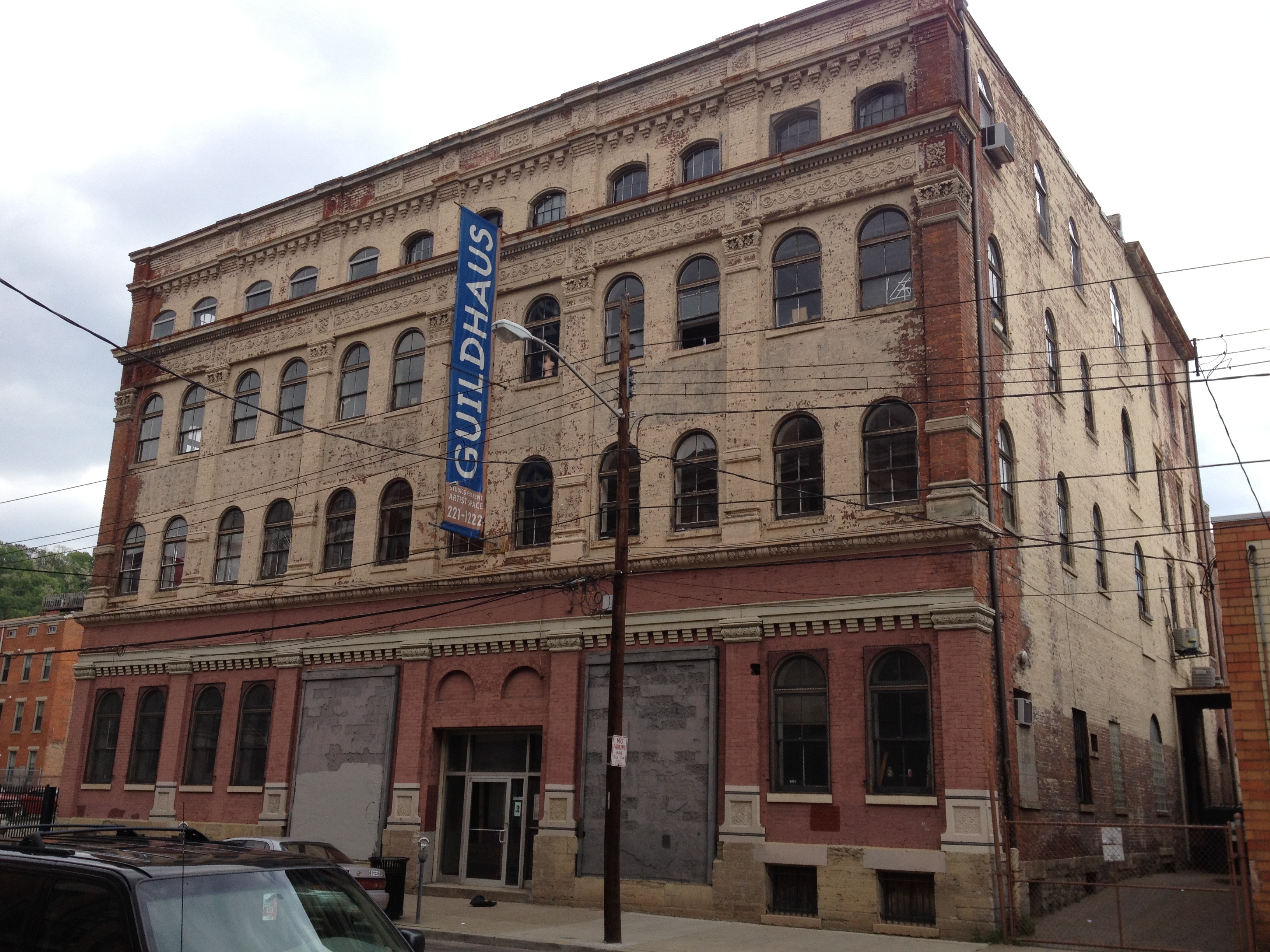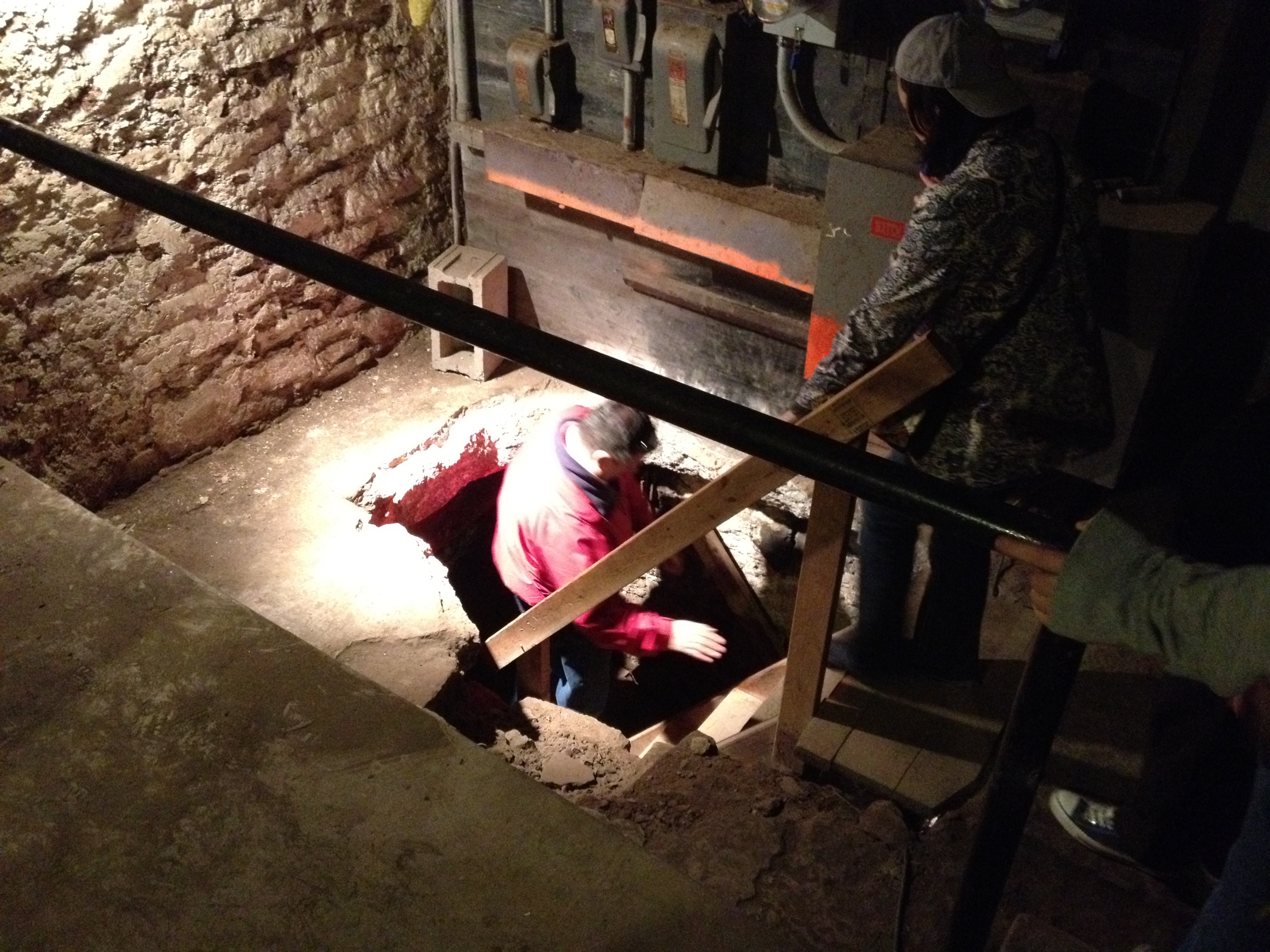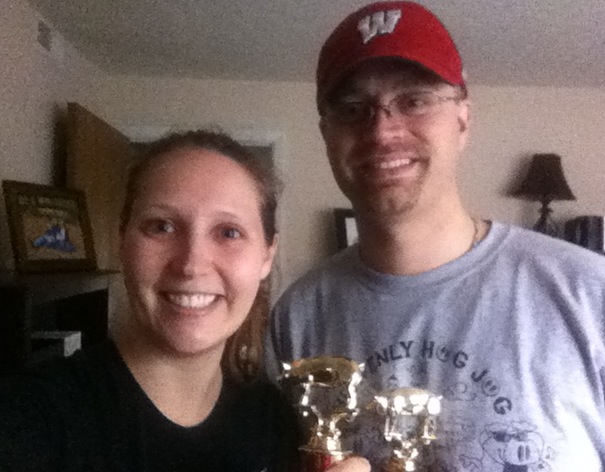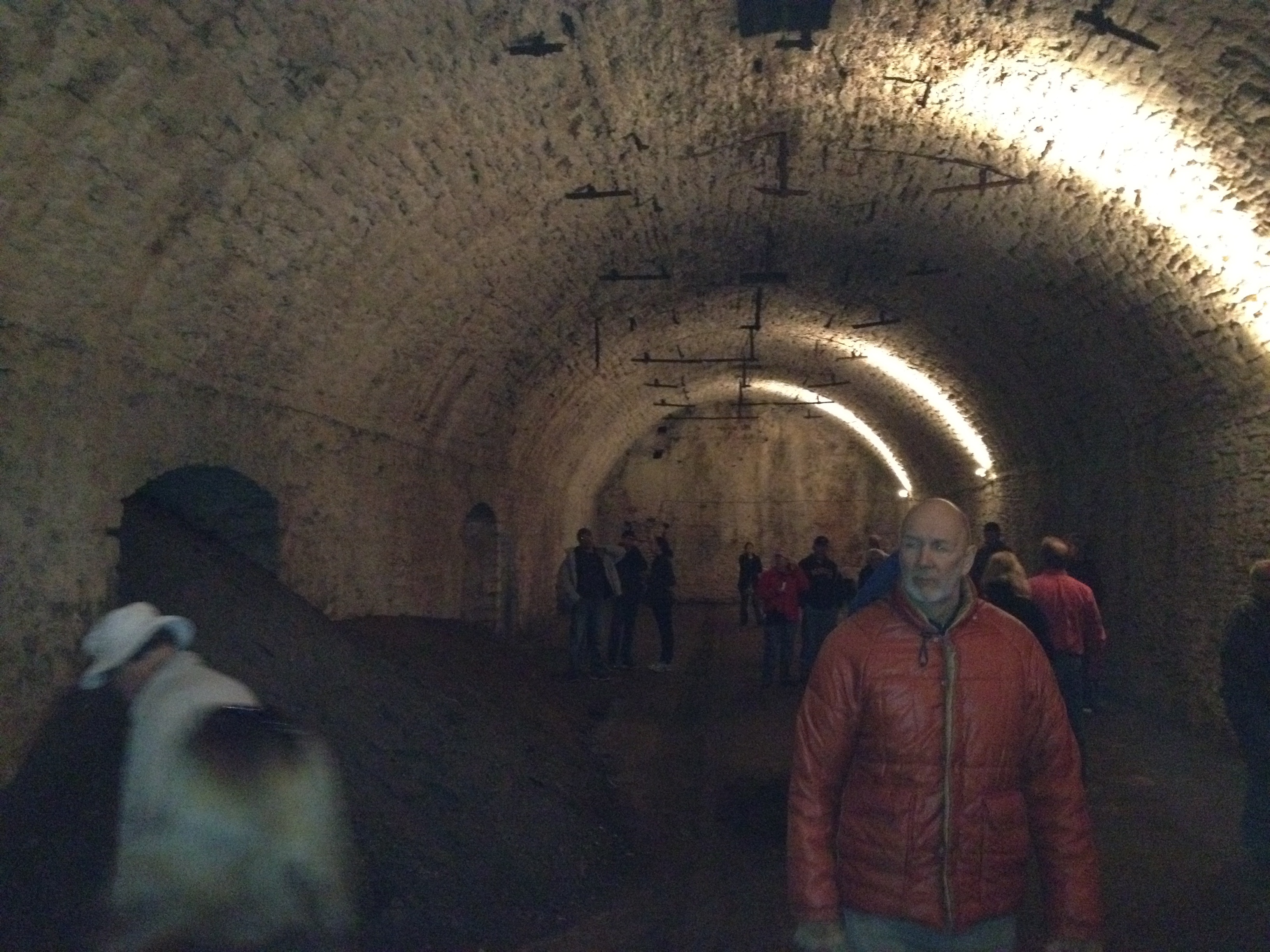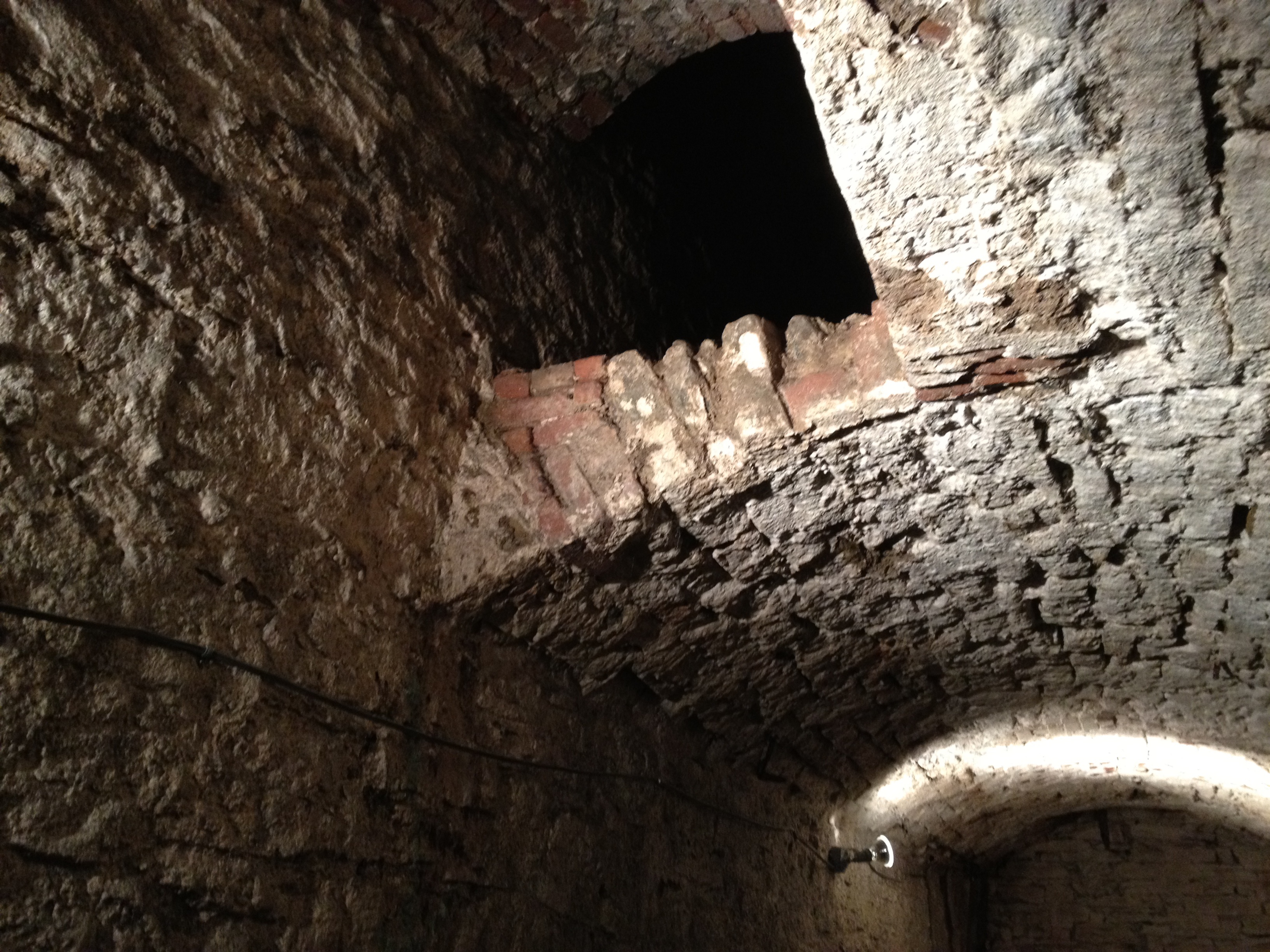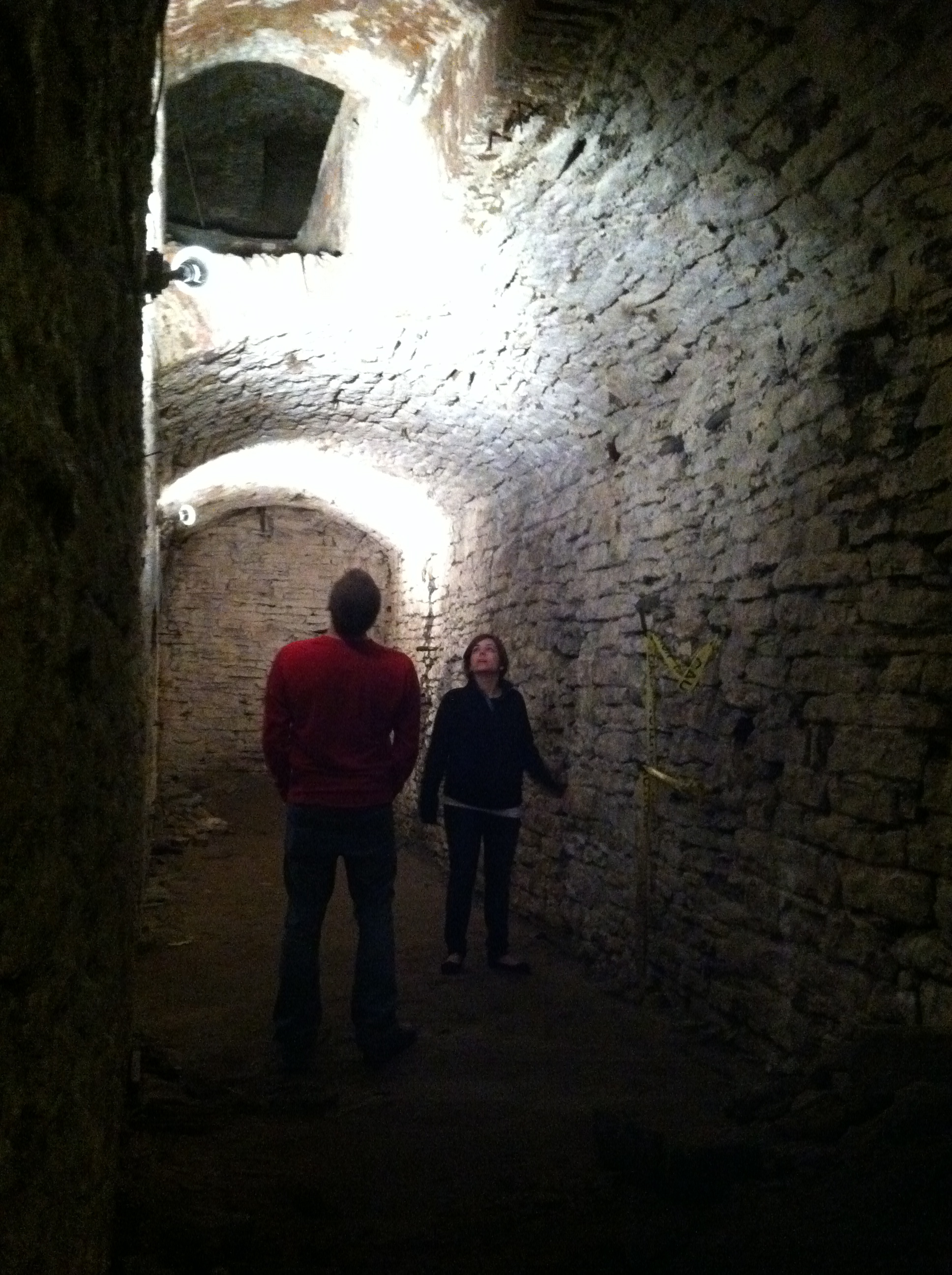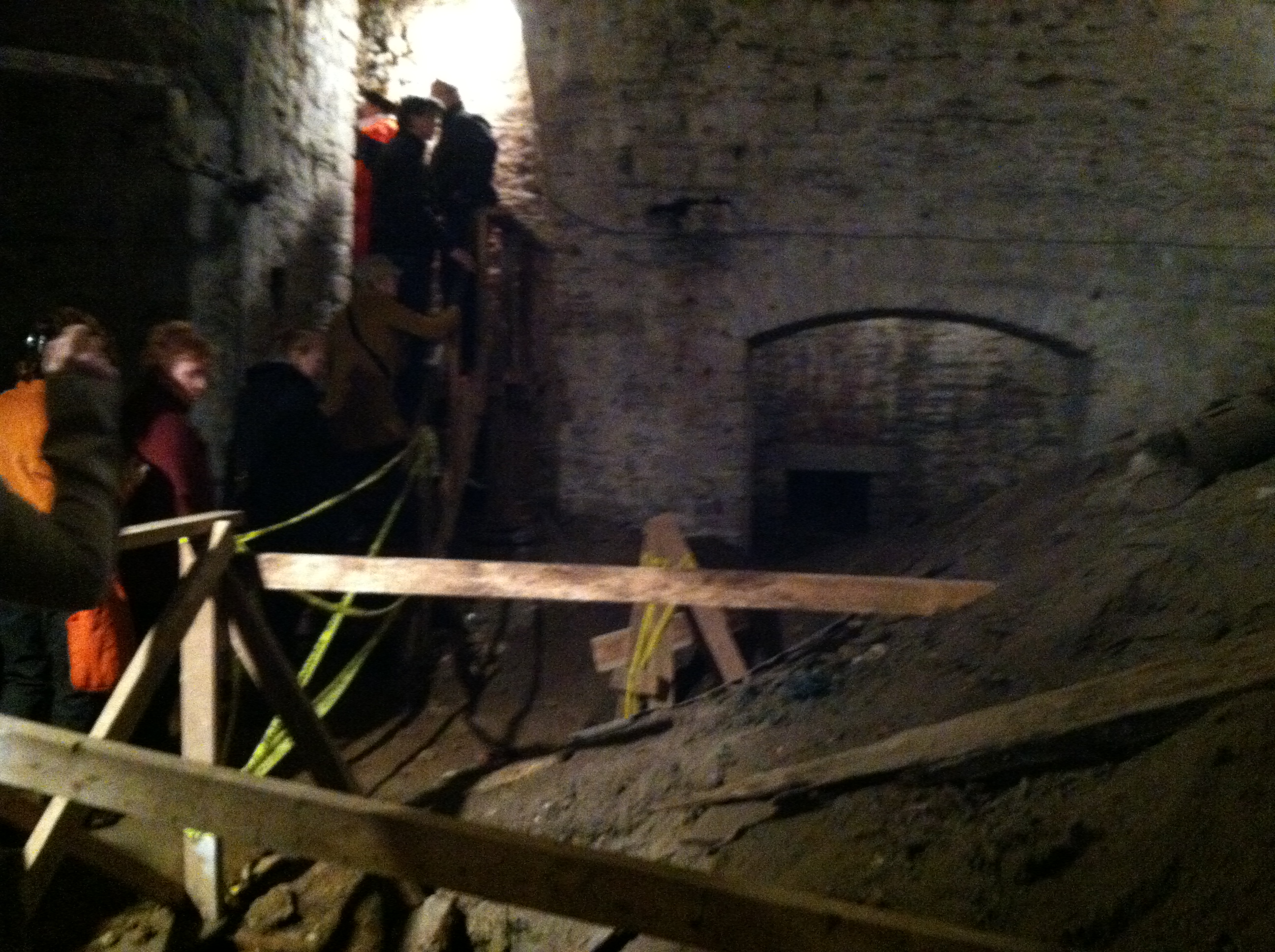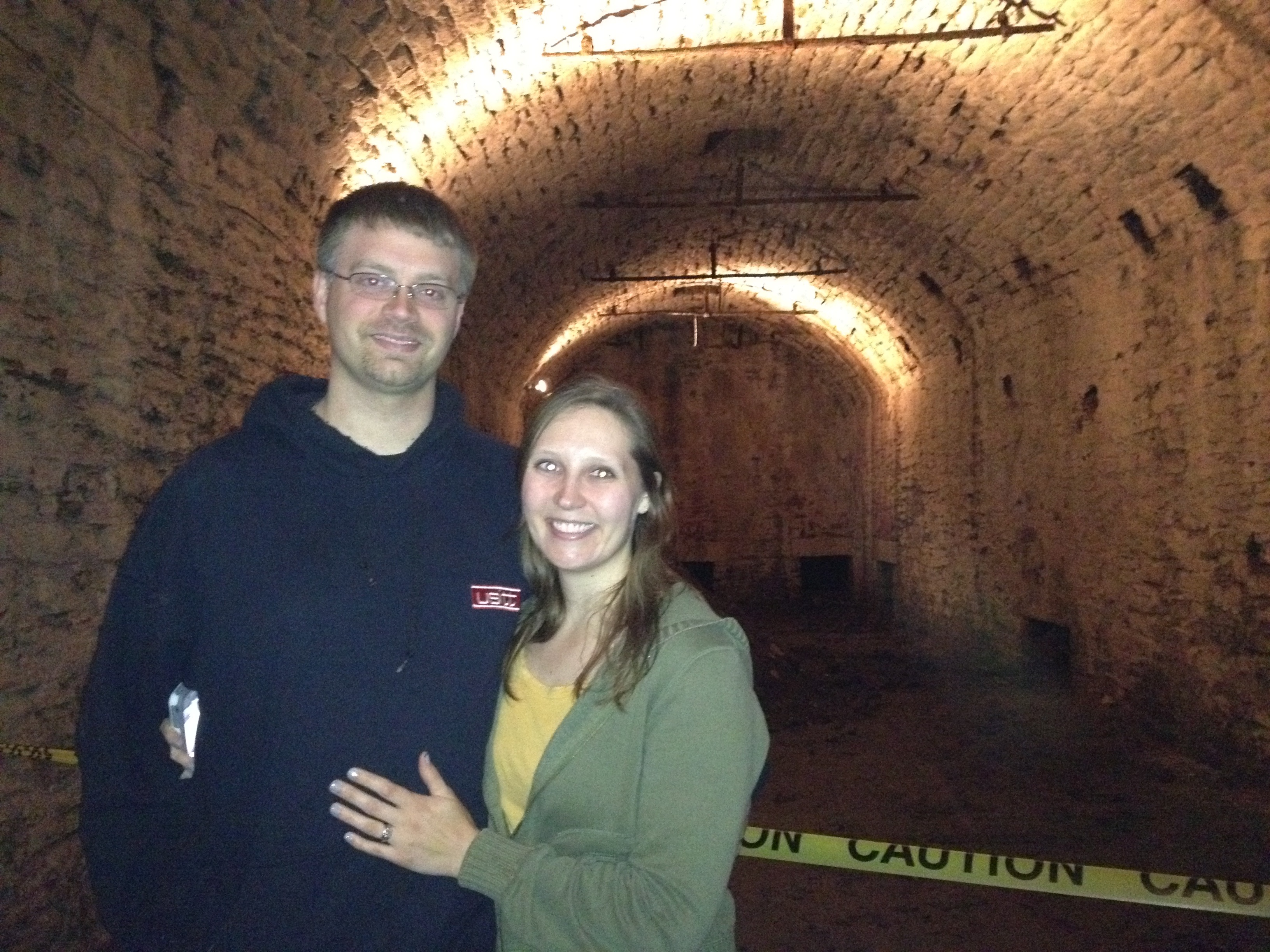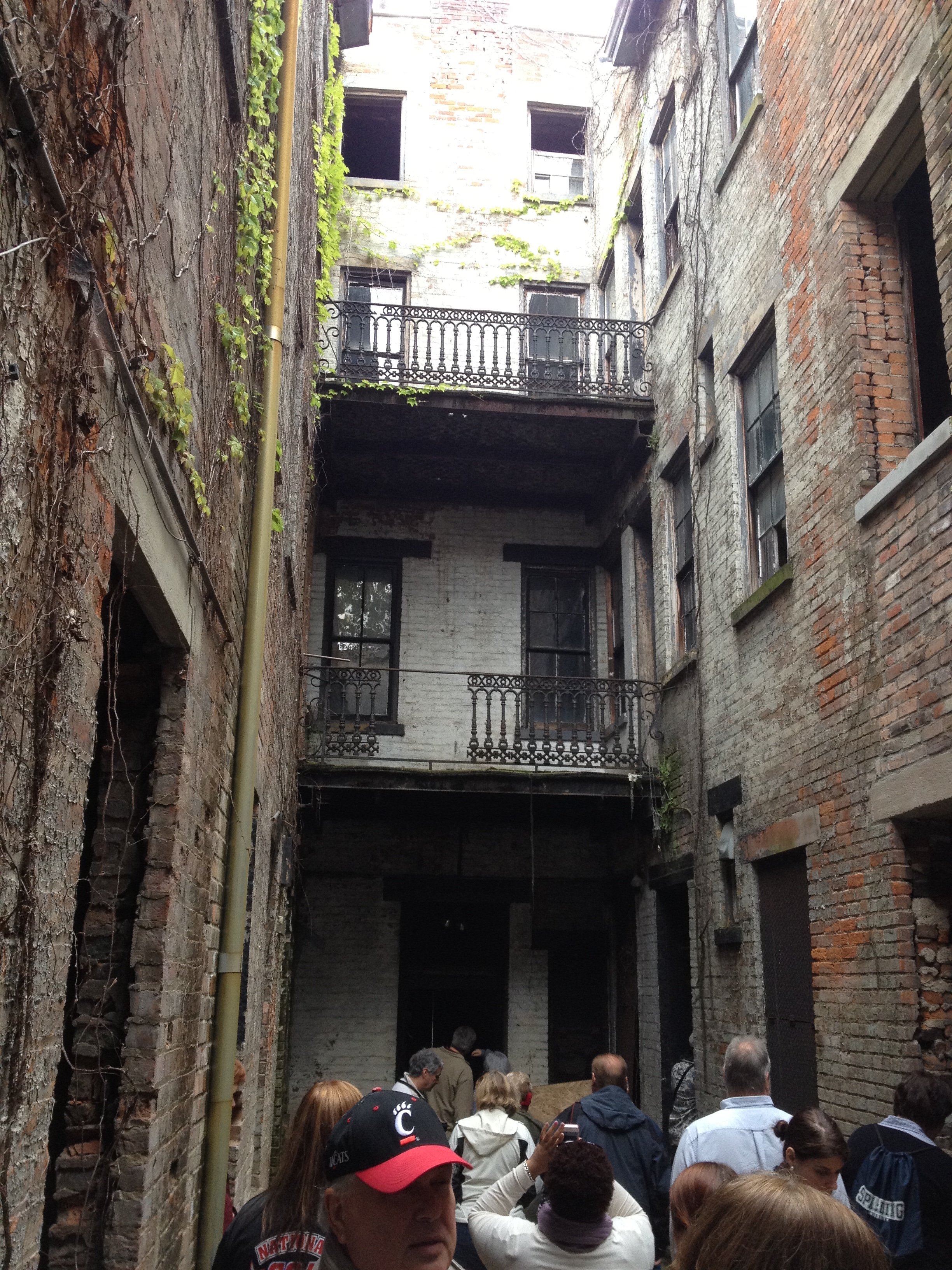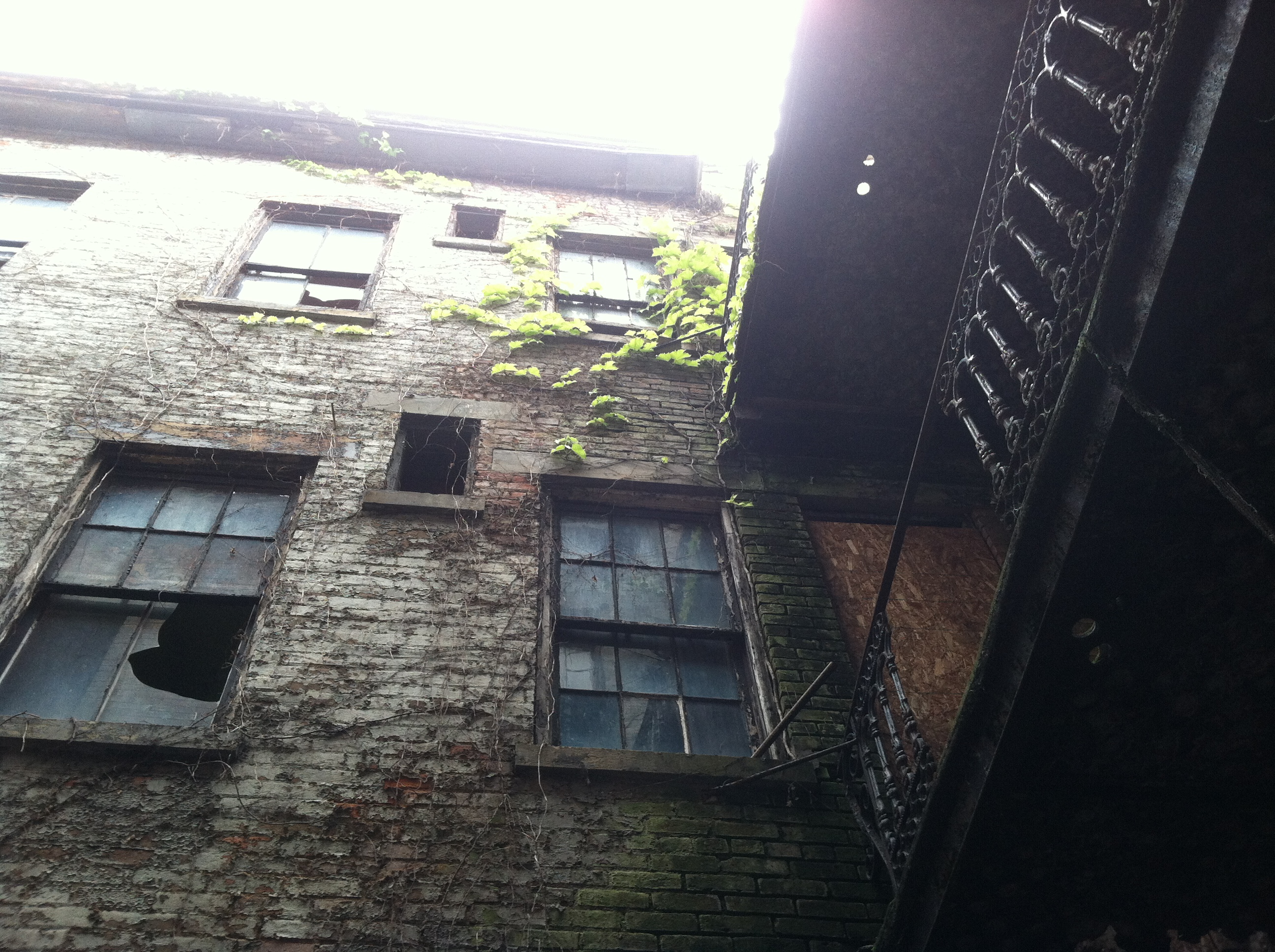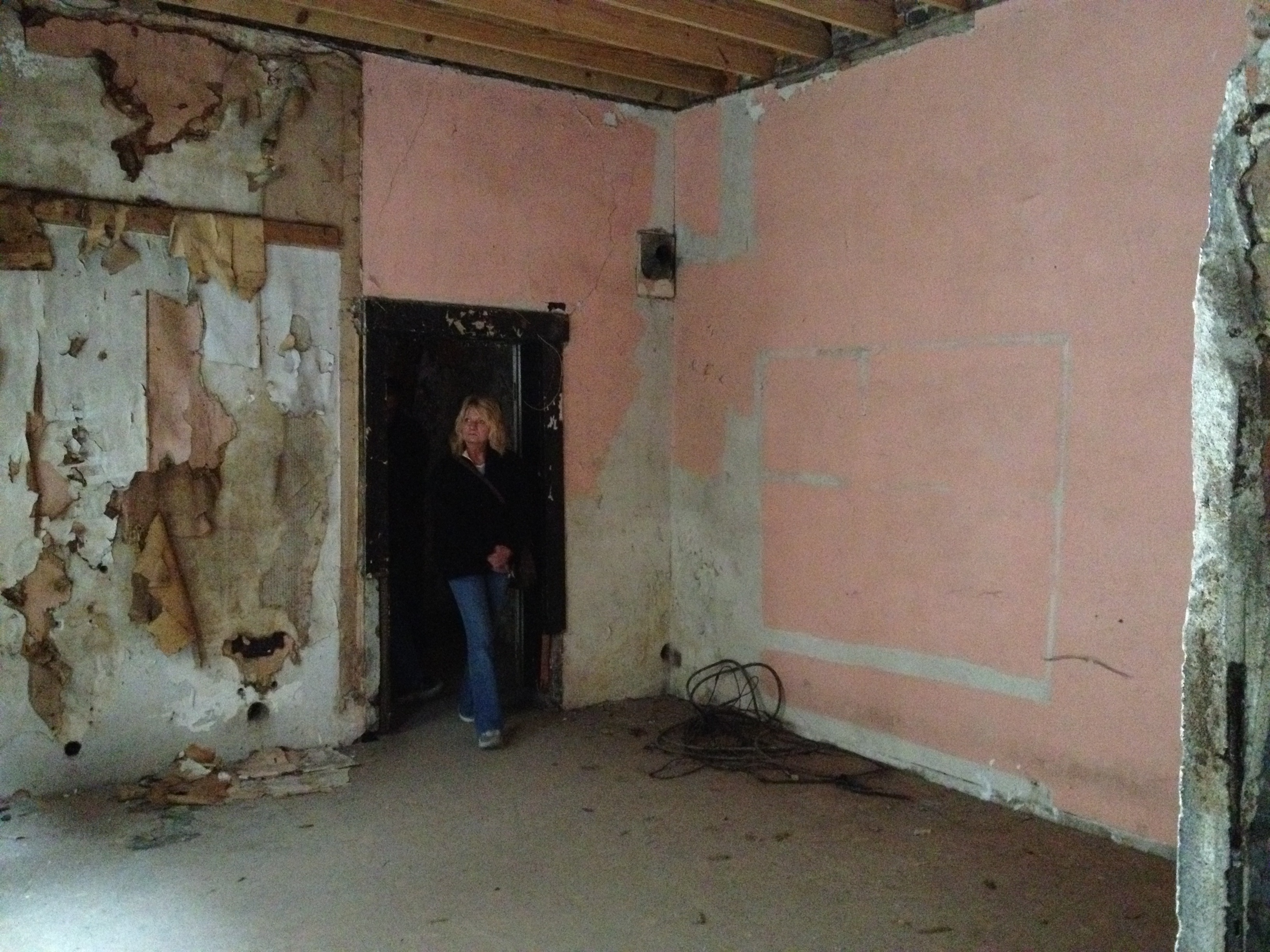On Sunday we redeemed a half-off Groupon for the Queen City Underground Tour: Bosses, Breweries, and Burials through American Legacy Tours at the Cincy House on Vine Street downtown.
Although the tour actually had nothing to do with burials and we did not venture down into any kind of burial chambers as advertised, at least that I can remember, the tour was still excellent and we had such a fun time! It was definitely more packed than we expected (probably close to 75 people), but the two tour guides were always loud enough to be heard by everyone (which is normally one of my biggest gripes about group tours and tour guides), plus they were funny, knowledgeable, likeable, and clearly enjoy their work, which makes for a pleasant experience for everyone. The walking tour was about 2 hours and covered about a four block radius of Cincinnati’s historic Over-the-Rhine district. It was cool and windy, but being a Sunday morning the streets were quiet and the atmosphere was wonderful. I loved being able to go into (and beneath!) the beautiful old, historic, abandoned, boarded-up buildings from the 1850s-1900s that I pass every day on my way to work.
Cincinnati has such a rich and lively history, so it was great to learn a little more about it!
John and Mitch, our tour guides, informed us that Cincinnati was known as the “Paris of the west” and that Over-the-Rhine is the largest in-tact historical district in the USA, even beating out the New Orleans French Quarter for the title. Back in the late 1800s, the several blocks that encompassed Over-the-Rhine were home to more than 130 theatres, beer gardens, bars and saloons. Germans immigrants, who were exceptionally fond of their beer, inhabited the area in jam-packed tenant buildings and, second only to Milwaukee and St.Louis, Cincinnati was one of the biggest brewing cities in the country. The only difference is that Milwaukee and St.Louis exported their beer to other states, while nearly 99% of the beer brewed in Cincinnati was consumed within 1/2 mile of where it was bottled. There were breweries on every corner. And under all these buildings were lagering tunnels and storage tunnels and tunnels to transfer the barrels of beer to the bottling factories. It is estimated that each person drank over 40 gallons of beer per year. Back then Cincinnati’s water was exceptionally disease-ridden – it is said that you could walk across the Ohio river on the skins of rotting pig carcasses without ever getting your feet wet – and because of the alcohol in beer, it was more sanitary to drink beer than water! In fact, Over-the-Rhine got it’s name from this. If you wanted a good German brew, you had to literally cross “over the rhine” (the Ohio river which they mockingly nicknamed the rhine) to get it. So brewing plays a huge role in Cincinnati’s history.
We learned about the historic People’s Theatre (now Venice on Vine) that hosted hotshot Buffalo Bill, and was also the place where his wife, the famous gun slinging Annie Oakley (who took her stage name from Oakley, a suburb of Cincinnati near where we live) entered a shooting contest and got her start. We learned about all the actors and plays and wild entertainment acts and traveling carnival shows that frequented the streets of Over-the-Rhine. Interesting how all those theatres are now parking lots – a disturbing trend that continues still to this day – a real shame.
We ventured into the worn-out remains of an old original 1870s theatre, beer garden and German newspaper printing building, which found a new life in the late 1990s and early 2000s as a goth fetish club. When the building was still a theatre and beer garden, it often featured “strongest man” competitions.
We walked past one of my favorite little gardens in downtown Cincinnati, which shows off some beautiful flowers, wall murals, and tile work in an urban setting.
We strolled past one of my most favorite historic churches in the area.
And we arrived at a gorgeous building that used to be known as the “Second City Hall.” This building was a really nice beer garden, a beer garden you could take your women and children to, a beer garden where what eventually became the Cincinnati Symphony Orchestra would play music on weeknights, a beer garden where one of Cincinnati’s biggest political machine bosses, Boss Cox, conducted his business. If you needed a job, a favor, or anything else – you met Boss Cox for a beer at this beer garden.
Next we hit up the Guildhaus, where a series of underground lagering tunnels were accidentally discovered from old blueprints of the building that somehow survived prohibition. The building used to be a brewery, and the tunnels were used as a cool place to store and ferment the beer before the giant barrels were rolled in carts through the tunnels, under the streets, to the bottling factories. During prohibition the tunnels were filled in with dirt in an effort to discourage any kind of sneakiness. It is estimated that almost every building in Over-the-Rhine has tunnels running under it. We learned about the copper pipes and how ammonia and other fluids were run through them to keep the tunnels cool, and how the holes in the brick and tunnel ceilings were used as a ventilation system to keep the carbon dioxide from filling the tunnels. It was great fun exploring down there! You had to squeeze down a real sketchy little steep staircase from a blown-out hole in the concrete to get down there, but that kind of made it all the more fun.
We traipsed back up to ground-level and made our second to last stop at an old German tenant building that used to house up to 10 people in each of its little two-room apartments. It is now for sale for $1 (but don’t quote me on that!!). The catch is that whoever purchases it must retain its historical integrity. They cannot buy it, tear it down, and rebuild something new in its place. They have to restore it and keep its structural historical significance alive, which is often much more expensive than just tearing it down and starting again from scratch. As part of the renovation and restoration efforts to bring Over-the-Rhine back to its glory (instead of the crime-ridden, violent slum that it became and home of the 2001 race riots), all these beauties are for sale to people who want to fix them up and turn them into lofts, storefronts, boutiques, galleries, and snazzy little restaurants. Up until a few years ago people were still squatting in these unsound buildings and police were hauling out dead bodies from its rooms on a weekly basis. Now the company that owns all these buildings and is selling them for the purpose of revitalizing Over-the-Rhine has them all boarded up, but gave American Legacy Tours the keys to several of them for touring purposes.
Our last stop was at a chic, upscale little furniture and home furnishings boutique on Vine street near Cincy House. This particular store was one of the Over-the-Rhine success stories. An old historic building with a rich history, most likely with underground tunnels running beneath it, that was purchased, remodeled, preserved, and now helps bring beauty and economic vibrancy to Over-the-Rhine once more. Many of the businesses, much like this one, who call Over-the-Rhine home do so because they passionately believe in this area. They want to bring it back to life and restore its former glory while keeping the tales of its rich, varied, and historically significant past in mind. So it was fitting to end the tour at a place where John and Mitch could encourage all the tour-goers to continue to patronize the tours, restaurants, shops, and theatres in Over-the-Rhine. Because with each purchase made to an Over-the-Rhine company, the revitalization effort only grows stronger.
And if we had more money I definitely would have patronized the heck out of that little boutique! I spied a gray, white and yellow patterned arm chair, a few rugs, unique chandeliers, and a wall full of urban canvas wall paintings I would have loved to bring home! One day. Maybe. But probably never. Ha. It’s the thought that counts.
Meanwhile, as part of the tour, advance tickets to their future tours were available for purchase at 50% off (tickets are normally about $20 per person, so $10 per person is a pretty great deal for some entertainment and knowledge, we think!). Since we had such a great time, saw some really cool things, and so enjoyed learning more about our city, we bought a few more sets of tickets to go on their other tours! Even though you read this overview of the Queen City Underground tour, you really should still go on it if you get the chance – I skipped over a lot of great information they shared with us. Plus it’s really a great opportunity to experience it first hand instead of just through pictures.
Sometime this season we’ll be going on their famed Newport Gangster Tour, Civil War Tour, Queen City is Haunted Tour, Barons & Bike Tour, and Rookwood & Wine Tour – I’m ridiculously excited about the last two tours, though they all sound like great fun! You can, and SHOULD read a quick little paragraph about the upcoming tours we’ll be going on here. Then let me know if you want to come on any of them with us!
On May 12 we’ll be going on the Cincinnati Abandoned Subway Tour through the Cincinnati Museum Center’s Heritage Program. We have been waiting to go on this tour for well over a year and we’re SO excited for it!!
P.S. – But why on earth I agreed to do the Queen City is Haunted tour on a Friday night, in the dark, is beyond me. A lot of the places we visited on this Queen City Underground Tour are some of Cincinnati’s most haunted locations. I’m a huge pansy and cannot even fathom how I am going to make it through that tour. I’m sure there’s a ton of great history to be learned, so if you fancy scaring yourself silly and you want to go with Ted, be my guest!!
